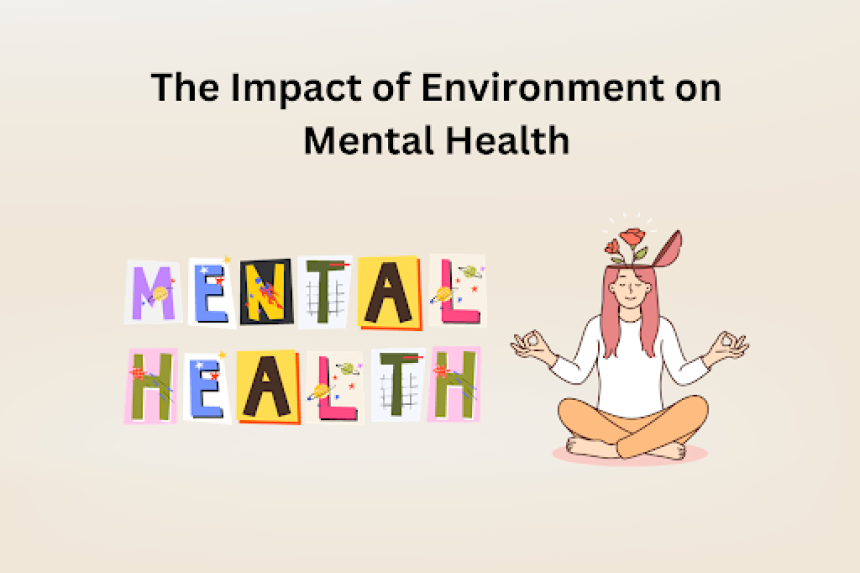Mental health is exclusively connected to the environment and is a multidimensional factor in determining overall well-being. Our surroundings have a significant impact on our mental health as we examine the complex relationship between our mental health and the places we live. It is critical to comprehend this symbiotic relationship in all contexts, from our households to larger community settings, especially for individuals obtaining Mental Health Certification. This blog explains Mental Health and explores the relationship between the environment and mental health.
Embark on a transformative journey above the clouds with Ian Murton’s hypnotherapy for fear of flying. Let go of anxiety and soar towards freedom with personalized sessions tailored to your needs.
What is Mental Health?
Let’s see the fundamentals of mental health before delving into how the environment affects mental health. Mental health encompasses our emotional, psychological, and social well-being. It influences our thoughts, feelings, and actions, as well as how we deal with stress, interact with people, and make decisions.
Mental health is vital at all stages of life, from childhood and adolescence to even as an adult. If you have mental health difficulties throughout your life, it may impair your thinking, emotions, and behaviour. A person who is mentally well can manage everyday stressors, work well, and make a positive contribution to their community.
The Interconnectedness of Environment and Mental Health
The environment we interact with and its effect on mental health are stronly linked to each other. Our living environments—whether they be our homes, offices, or public places—have a big impact on our mental health.
Identifying the environmental aspects that might have an impact on your psychological well-being can help you determine if the places you frequent are beneficial or detrimental to your mental health. It might also help you determine whether adjustments are required to begin feeling better mentally and emotionally.
Workplace Environment
If you are a working professional, you would spend a lot of time in your workplace. It is natural that work will have a significant impact on your overall health and welfare. Aside from the monetary rewards, your career provides meaning, structure, and purpose to your life. It can also give you a sense of purpose, boost your self-esteem, and provide a valuable social outlet.
However, working in a hostile workplace can have the opposite impact, wreaking havoc on your mental health. Long hours, understaffing, a lack of support, and sexual harassment at work can increase your stress and lead to mental health problems such as anxiety, depression, and substance abuse. If you are experiencing these problems, it is best to seek out the best sexual harassment lawyer NYC for the best resources and support available to protect your well-being and rights.
Community and Social Environment
Community may be defined in a variety of ways, but at its core, it is all about connection. Community is more than simply an entity or a collection of individuals; it is an emotion. It is about feeling connected to people, accepted for who you are, and supported. Being connected may make us feel needed and appreciated.
Community gives you a sense of belonging – it’s a group you identify with. This is not the same as trying to fit in with a group. Having somebody you can turn to when you need to chat or need assistance with anything can help you get through challenging situations that may seem overwhelming on your own.
This sense of community can improve your mental health by meeting your emotional and psychological requirements. A feeling of community involvement, social ties, and a sense of belonging are essential elements of mental health. People who have robust social support networks tend to be more resilient when faced with obstacles in life.
Home Environment
Your home is by far the most important environment that shapes your mental health. How does one’s home environment effect their mental health?
The human mind and body are inextricably linked, and many factors, including your living environment, can have an impact on both. A tranquil and visually pleasing home environment might provide a better sense of well-being than a cluttered, chaotic one. Even the color of your walls and furniture might influence your mental wellness.
Having a supportive family is also important for mental wellness as family issues can cause negative environment and lead to mental health issues.
The Role of Nature and Urban Spaces
There are inherent links between the physical environment—which includes urban planning and the existence of nature—and mental health. Research has shown that exposure to nature can have positive impacts on mental health and it is done by lowering stress levels and fostering a calmer atmosphere. However, the urban environment—which is marked by traffic, noise, and little greenery—can also lead to higher stress levels and mental exhaustion.
Gaining accreditation as a mental health professional requires having a solid awareness of the effects of both built and natural settings. Important factors to consider for improving mental health services include incorporating nature into therapy methods, encouraging access to green spaces, and supporting urban design that puts mental health first.
The Therapeutic Impact of Environment
Novel strategies for mental health therapies have been made possible by the realisation of the therapeutic potential of surroundings. For instance, therapeutic processes include ecotherapy that incorporates experiences in nature and outdoor activities. This method recognises the ability of nature to improve mental health in general and to heal.
Professionals pursuing certification in mental health are exposed to a growing range of therapy approaches that capitalise on the environment’s influence. Adding natural features, modifying lighting and colour schemes, and designing warm, safe rooms that help people seeking care feel at ease and trust can enhance the therapeutic atmosphere.
Implementing Change: Advocacy and Awareness
Professionals in mental health who hold certificates and are well-versed in the significant influence of the environment on mental health are in a good position to promote structural modifications. This advocacy could push for inclusive community practices that put well-being first, supporting green urban environments, or encouraging workplace policies that support mental health.
Moreover, it’s critical to raise awareness of the reciprocal relationship between mental health and surroundings. Spreading knowledge about the value of creating supportive surroundings for mental health is possible through public campaigns, educational initiatives, and community outreach programmes.
Conclusion
It is critical to understand the complexity of relationship between mental well-being and factos like workplace, community and home environment. Understanding these factors can lead to better individual mental health. Our environments, from the cosy confines of our houses to the vast open spaces of our neighbourhoods, have a significant impact on our mental health. A holistic approach by mental health practitioners emphasises the interconnectedness of mental health in all spaces by recognising this symbiotic link and fighting for conditions that foster well-being.




